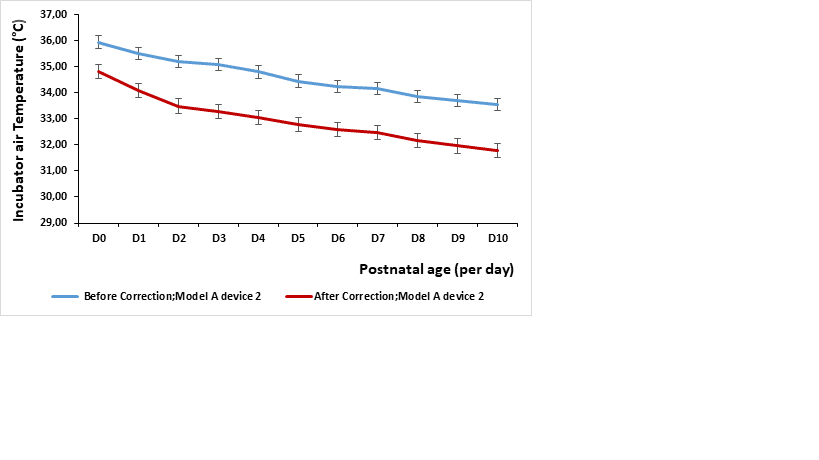
Automated Thermal Management of the Neonatal Incubator during Phototherapy
2Pediatric intensive care,, CHU Amiens, Picardie,, France
The incidence of jaundice is about 80% in preterm newborns, and Phototherapy (PT) is considered the first-line treatment. The efficacy of PT depends not only on the device characteristics but also on the modalities of use such as the distance between the infant and the device, the light source, the body surface area exposed, and the duration of exposure. However, risks such as hyperthermia also exist during PT, and the evaluation of the parameters that influence PT efficiency and the overheating risk is not easy in clinical practice.
The aim of this study is to evaluate the risk of overheating during PT. A thermal mannequin representing a preterm newborn was used to simulate heat exchange and to propose a new optimal air temperature setpoint during PT in various clinical situations.
We evaluated the impact of 3 different incubator models, the distance between the PT device and the preterm newborn(incubator roof or 5cm above), and the time required to reach thermal equilibrium during PT.
Preliminary data point out that there is a risk of hyperthermia related to decreased heat loss in the premature newborn during PT. The power of the mannequin decreased significantly during PT (before PT:6.491±1.444 vs during PT:5.295±1.533W;p<0.0001). A significant increase was measured in the incubator’s air temperature(before:31.3±0.9 vs during:31.690±0.911°C;p<0.0001), in the incubator’s roof temperature (before:25.883±7.209 vs during:30.938±3.076°C;p<0.0001) and in the radiation temperature(before:30.480±0.685 vs during:31.390±0.797°C;p<0.0001). The simulation results suggest that optimal air T°C should be decreased between 1.64±0.20 and 2.70±0.07 °C according to the clinical situation, the model of the incubator, the PT device, the distance between the neonate and the device, and the gestational age.
Results show that the overheating risk associated with PT is correlated with the incubator, the PT device and its use. Therefore, we propose a correction of the incubator’s air temperature setting during PT.
 and the medical device (1 and 2). - Copy 1.png)

Powered by Eventact EMS